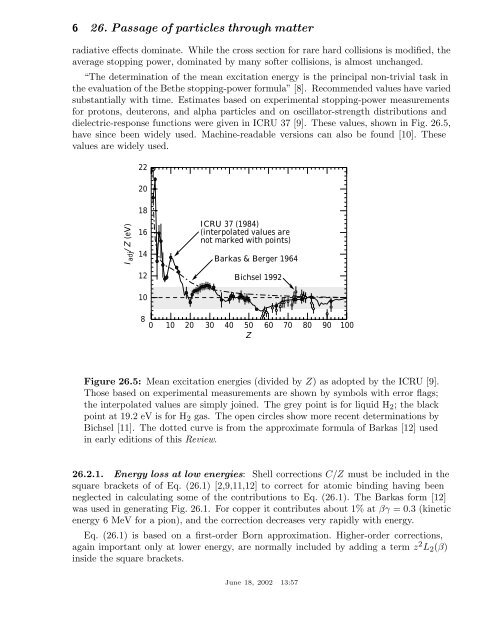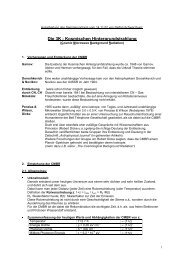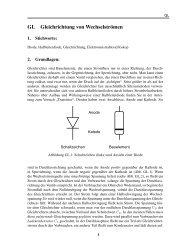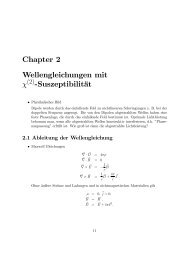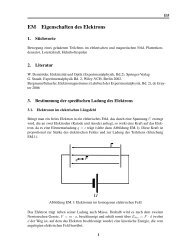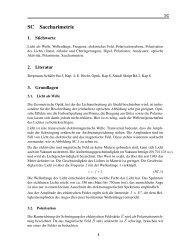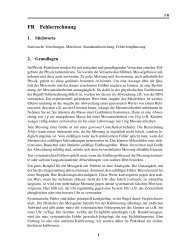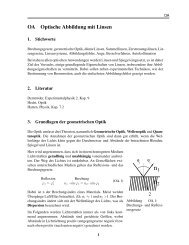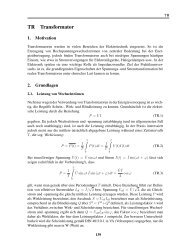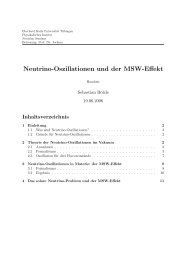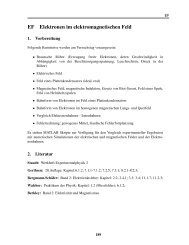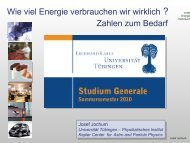26. passage of particles through matter - Particle Data Group
26. passage of particles through matter - Particle Data Group
26. passage of particles through matter - Particle Data Group
Create successful ePaper yourself
Turn your PDF publications into a flip-book with our unique Google optimized e-Paper software.
6 <strong>26.</strong> Passage <strong>of</strong> <strong>particles</strong> <strong>through</strong> <strong>matter</strong><br />
radiative effects dominate. While the cross section for rare hard collisions is modified, the<br />
average stopping power, dominated by many s<strong>of</strong>ter collisions, is almost unchanged.<br />
“The determination <strong>of</strong> the mean excitation energy is the principal non-trivial task in<br />
the evaluation <strong>of</strong> the Bethe stopping-power formula” [8]. Recommended values have varied<br />
substantially with time. Estimates based on experimental stopping-power measurements<br />
for protons, deuterons, and alpha <strong>particles</strong> and on oscillator-strength distributions and<br />
dielectric-response functions were given in ICRU 37 [9]. These values, shown in Fig. <strong>26.</strong>5,<br />
have since been widely used. Machine-readable versions can also be found [10]. These<br />
values are widely used.<br />
22<br />
20<br />
I adj /Z (eV)<br />
18<br />
16<br />
14<br />
12<br />
10<br />
ICRU 37 (1984)<br />
(interpolated values are<br />
not marked with points)<br />
Barkas & Berger 1964<br />
Bichsel 1992<br />
8<br />
0 10 20 30 40 50 60 70 80 90 100<br />
Z<br />
Figure <strong>26.</strong>5: Mean excitation energies (divided by Z) as adopted by the ICRU [9].<br />
Those based on experimental measurements are shown by symbols with error flags;<br />
the interpolated values are simply joined. The grey point is for liquid H 2 ; the black<br />
point at 19.2 eV is for H 2 gas. The open circles show more recent determinations by<br />
Bichsel [11]. The dotted curve is from the approximate formula <strong>of</strong> Barkas [12] used<br />
in early editions <strong>of</strong> this Review.<br />
<strong>26.</strong>2.1. Energy loss at low energies: Shell corrections C/Z must be included in the<br />
square brackets <strong>of</strong> <strong>of</strong> Eq. (<strong>26.</strong>1) [2,9,11,12] to correct for atomic binding having been<br />
neglected in calculating some <strong>of</strong> the contributions to Eq. (<strong>26.</strong>1). The Barkas form [12]<br />
was used in generating Fig. <strong>26.</strong>1. For copper it contributes about 1% at βγ =0.3 (kinetic<br />
energy 6 MeV for a pion), and the correction decreases very rapidly with energy.<br />
Eq. (<strong>26.</strong>1) is based on a first-order Born approximation. Higher-order corrections,<br />
again important only at lower energy, are normally included by adding a term z 2 L 2 (β)<br />
inside the square brackets.<br />
June 18, 2002 13:57


